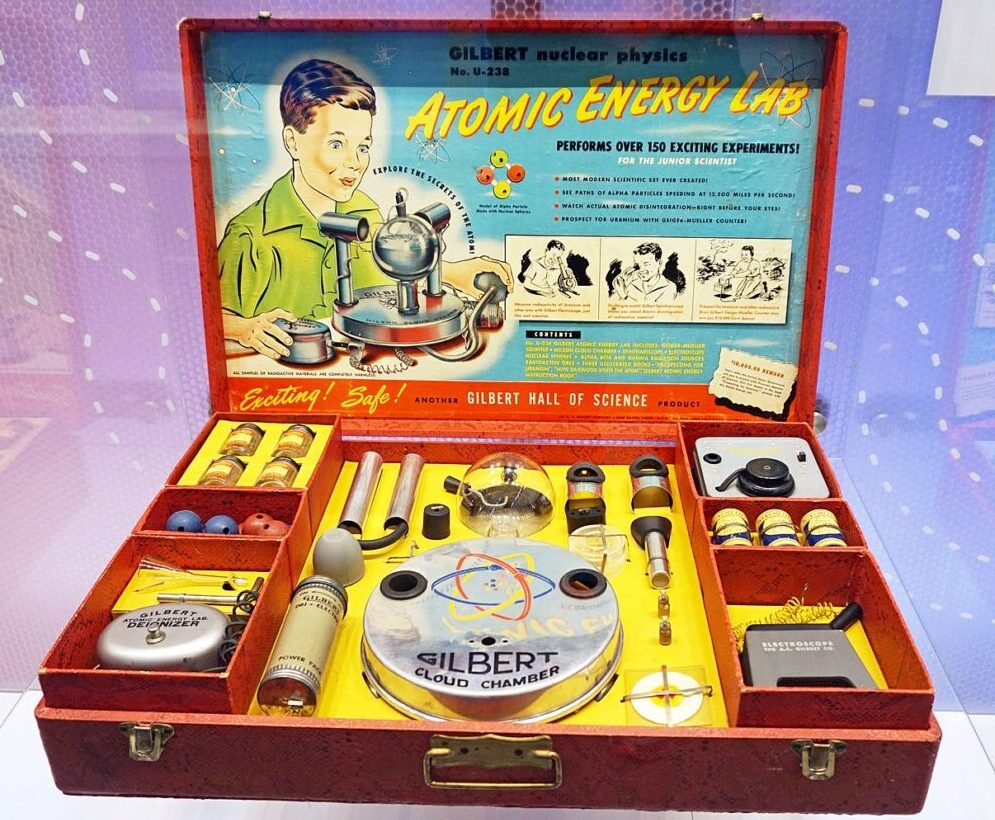When people say that children’s toys of previous generations were unsafe, that might be an understatement, and the Gilbert U-238 Atomic Energy Laboratory is the perfect example of that.
The Atomic Energy Lab was a toy lab set that was promoted as giving kids the opportunity to create their own chemical reactions and put on a “magic show,” so at least there was some educational aspect to it. Perhaps that was why it wasn’t all that successful, selling fewer than 5,000 kits between 1950 and 1951. Part of the reason too could have been the price, which was a steep $49.50, or $560 in today’s dollars. But the other reason was that this sucker utilized actual radioactive material.
Playtime Goes Nuclear With the Gilbert Atomic Energy Lab
The lab set contained a cloud chamber that allowed users to watch alpha particles, a spinthariscope that showed the results of radioactive disintegration, and an electroscope measuring the radioactivity of different substances. That sounds like a lot of scientific jargon to be honest, but nothing I’d want my kid playing around with. The toy was of course labeled as “completely safe,” provided that no curious child ever dared to break the containers that housed the radioactive materials. And we all know how careful children are with all of their toys, so I’m sure there was no risk of that ever happening. Low-level radiation sources in the kit included beta-alpha (Pb-210), pure beta (possibly Ru-106), and gamma (Zn-65), and I’m telling you right now, knowing that gamma radiation is in this kit, if I ever got my hands on one of them, I’m absolutely breaking it apart to see if I’ll turn into the Hulk.
Despite the Atomic Energy Lab being labeled as “perfectly safe,” it’s often been cited as one of the most dangerous toys of all time, and for good reason. Columbia University even ended up buying some of the kits for its own physics labs, so while the educational aspect was there, it was pure insanity to try marketing a full-on radioactive kit to kids, even if it did promote an interest in science.
How anyone survived living through the 20th century is beyond me.
(Photo credit: Tiia Monto)
